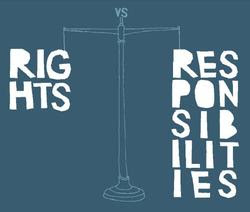Q.1.1 Ribble (2011) identifies nine elements that make up digital citizenship, encompassing the issue of the use, abuse and misuse of technology. Briefly discuss these nine elements.
Ribbles 9 Elements of Digital Citizenship:
1. Digital Access:
Full
electronic participation in society. Technology users need to be aware that not
everyone has the same technological opportunities and are still working towards
equal digital rights and supporting electronic access is the starting point of
Digital Citizenship.Full electronic participation in society, which
includes helping to make sure everyone has equal access to technology and
understands the limitations and drawbacks when this access is withheld. Helping
to provide and expand access to technology should be a goal of all digital
citizens. Users need to keep in mind that there are some that may have limited
access so other sources need to be provided.
2. Digital Commerce:
Electronic
buying and selling of goods. Technology users need to understand that a large
share of the market economy is done electronically.Full
electronic participation in society, which includes helping to make sure
everyone has equal access to technology and understands the limitations and
drawbacks when this access is withheld. Legitimate and legal exchanges occur
but the buyer and seller need to be aware of the issues associated with it.
Users need to learn about how to be effective consumers of digital economy.
3. Digital Communication:
Electronic
exchange of information. One of the significant changes within the digital
revolution is a persons ability to communicate with people. How to
make appropriate decisions when faced with so many different digital communication
options, such as when (and how) to send an email versus a text message or
casual social media connection.The expanding digital communication options have
changed everything people are to keep in constant communication with anyone
else. But unfortunately many users have not been taught how to make appropriate
designs when faced with so many different digital communication options.
4. Digital Literacy:
The
process of teaching and learning about technology and the use of technology. A
renewed focus must be made on what technologies must be taught as well as how
it should be used. New technologies are finding their way into the work place
that are not being used in schools. Learners must be taught how to learn
digital society. Digital citizenship involves educating people in a new way,
these individuals need a high degree of information literacy skills.
5. Digital Etiquette :
Electronic
standards of conduct or procedures. Technology users often see this area as one
of the most pressuring problems when dealing with digital citizenship. More
than just being able to recognize inappropriate behavior, good digital citizens
should know how to act appropriately online. Inappropriate behaviour is
recognised but before people use technology they do not learn digital citizen
etiquette.
6. Digital Law:
Electronic
responsibility for actions and deeds. Digital laws deals with the ethics of
technology within a society. There are certain rules of society that users need
to be aware in a ethical society. Users need to understand that stealing or
causing damage to others work, identity or property online is a crime. Hacking
into others information, creating destructive worms, plagiarising, downloading
illegal music, viruses or creating Trogan horses, sending spam or stealing
anyones identity or property is unethical.
7. Digital Rights and Responsibilities:
Hose
freedoms to extend to everyone in the digital world. Digital citizens
have the right to privacy, free speech etc. With these rights comes responsibility
as users must help define how technology is to be used in an appropriate
manner. Basic digital rights must be addressed, discussed and understood in the
digital world. In a digital society these 2 areas must work together for
everyone to be productive.
8. Digital Health and Wellness:
Physical
and psychological well being in a digital technology world. Eye safety,
sound ergonomic practices and repetitive stress syndromes are issues that need
to be addressed in a new technological world. Users need to be taught that
there are inherent dangers to technology. Beyond the physical issues are those
of psychological issues that are becoming very prevalent such as internet
addiction. Digital citizenship includes a culture where technology users are
taught how to protect themselves through education and training.
9. Digital Security: (self-protection):
Electronic precautions to guarantee safety. In a society
there are people who steal, disrupt or deface other people, the same thing goes
for the digital community. There needs to be virus protection, backups of data
and surge control of equipment. As a responsible citizen you must
protect your information from outside forces that may cause disruption or harm.
REFERENCES:
•
https://www.blogger.com/blogger.g?blogID=5785288288166032794#editor/target=post;postID=2769491053486642007;onPublishedMenu=allposts;onClosedMenu=allposts;postNum=3;src=postname
http://www.eschoolnews.com/2015/09/24/digital-citizenship-244/



Comments
Post a Comment